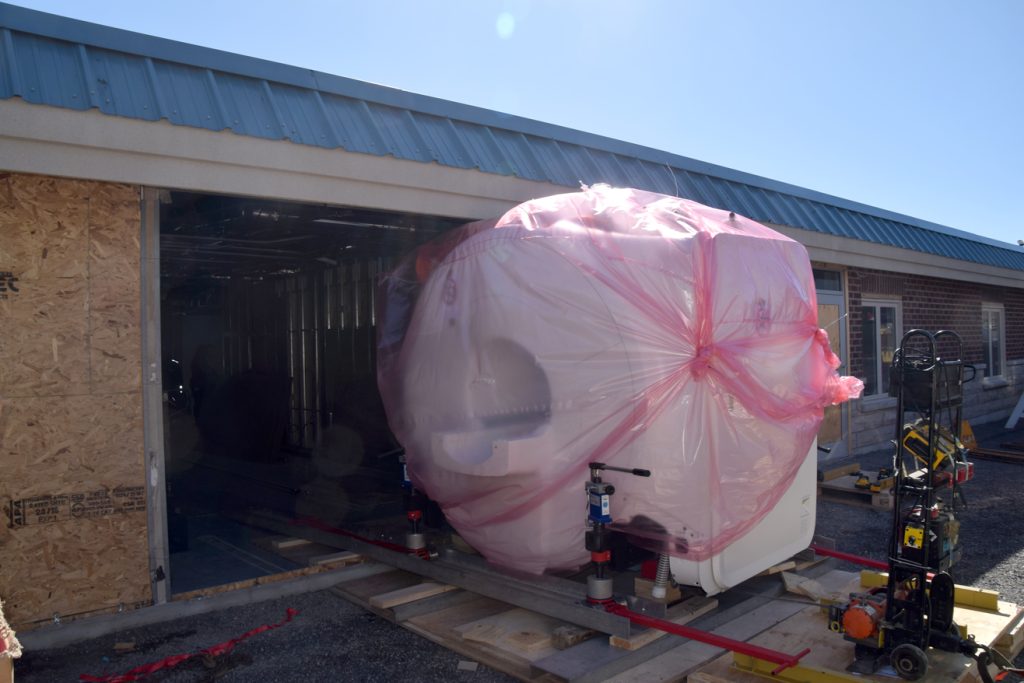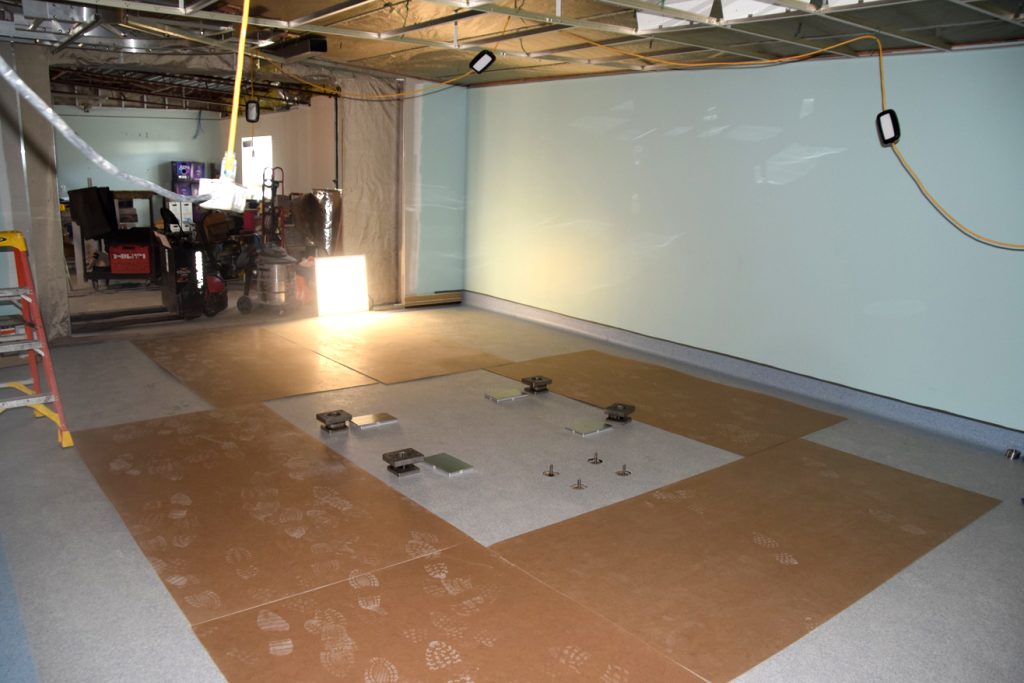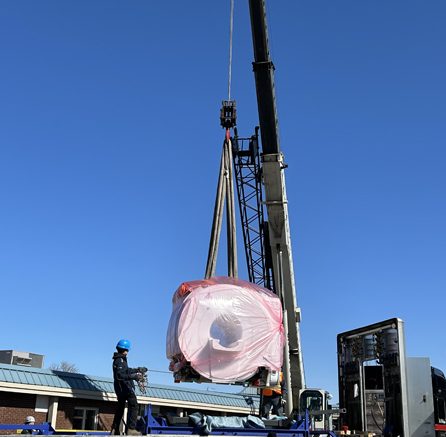Adam Prudhomme
Editor
Much easier to say than it was to get done, Lennox and Addington County General Hospital’s much heralded MRI machine was delivered on Monday.
Physically getting the 4,000 kg magnet from the truck to inside the Lenadco building required a crane, pulley, a dozen workers and a whole lot of patience. Laborious as it may have been, the Siemens Magnetom SOLA 1.5T MRI machine is now securely inside its new home, marking a new era of healthcare for the region.
“For the community this is an incredible step and for the region because now the wait times for MR are hundreds of days based on the priority,” said Karen Pearson, developer of LACGH’s MRI Program. “Our focus will be the lower priority (for MRI exams). We’re freeing up and hopefully taking some pressure off places like Kingston Health Sciences that are dealing with some very sick and very complex patients.”
Making the delivery somewhat less challenging was the fact that LACGH’s MRI unit is housed in a new wing of the Lenadco building that is still very much under construction. That meant fewer walls to knock down to get the massive machine inside. Being on a ground floor was also a major advantage.

The MRI machine magnet slides into the Lenadco building. Photo by Adam Prudhomme.
“We didn’t have to go through a roof like you have to in many hospitals,” said Pearson, who has overseen a handful of MRI deliveries to other hospitals across the province. “We didn’t have to close down a city street like you do in downtown Toronto. It went like clockwork, it was great.”
Between gaps in the walls, uneven steps and half-painted walls, it may be hard to believe how close LACGH is to welcoming MRI patients.
“It’ll be full assembled by the end of the week and (March 19) we’ll be activating it,” said Pearson. “Then there’s putting everything together, all the systems and programming it over the next week. You do all this work for months and months and then what’s going to happen in the next five to six days is going to be incredible.”
Once operational they’ll run a few test examinations, using fellow staff as volunteer subjects to ensure everything is running smoothly. By the end of April they’ll be seeing patients.

The room where the MRI machine now sits. Photo by Adam Prudhomme.
“It will increase access to care and diagnosis by having this in the region,” said Pearson, noting the location next door the main hospital is ideal. “Now you’re walking into a bright, sunny patient area and that’s going to give you an extremely high level of diagnostics and care but not have that hospital environment feel. It will be a huge advantage for the radiologist team itself that you’re attracting and will continue to attract and maintain high calibre radiologist who enjoy and want to work with MRI along with all the other modalities such as CT, X-Ray, ultrasound, mamo, that type of thing and a high calibre of technologists who are attracted to working in a department that has all this technology available to them.”
Napanee was among a handful of hospitals who secured provincial funding for operational hours for a new MRI machine with the condition that the hospital would be responsible for construction and equipment costs.
“There’s some sites that have not even broken ground or completed the RFP because they’re looking for financing, looking for space, looking for staff. Here we are fully champing at the bit, ready to go,” said Pearson.
The LACGH Foundation has raised about 40 per cent of it’s $3.5 million goal. To learn more about the campaign, visit https://lacghfoundation.com/campaign/.

